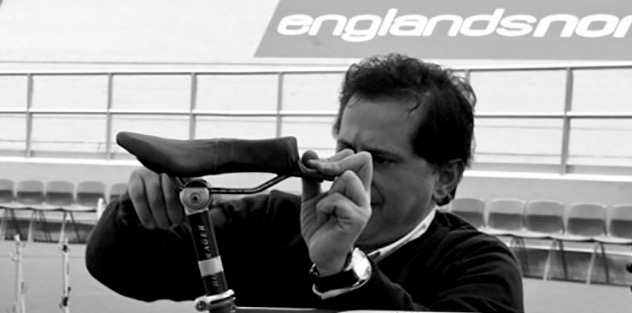
June 11, 2020

3D RIDER
Ever since he was a young racer growing up in Greece in the 1980s, Dimitris Katsanis has been tinkering with ways to make bicycles go faster. And over the past couple of decades, he’s built a career on the cutting edge of bicycle design: Katsanis became an icon in Britain when bikes he created helped its Olympic track cycling team win a slew of medals in 2008 and 2012, and top cyclists have used his creations to win nearly 100 Tour de France, Olympic and World Championship races. The designs Katsanis is focusing on nowadays need no cutting edge at all. In pursuit of his dream of building the lightest, fastest bike, Katsanis has turned to 3D printing.
Two-wheeled wonder: In 2015, Katsanis purchased an Arcam 3D printer. These machines, made by GE Additive, use electron beams to fuse together millions of grains of finely powdered metals like titanium, one hair-thin layer after another. The use of titanium, in particular, marks a manufacturing coup: It’s lighter than steel and stronger than aluminum, but it’s costly, and welding it requires special procedures. With 3D printing, though, Katsanis first found a way to use the material to design a revolutionary set of handlebars, and is now printing a myriad of smaller parts, like pedals and saddle clamps. Still pursuing his ideal bike, Katsanis has one ultimate dream: 3D-printing the whole darn thing. “This can be really mega,” he said.
Learn more here about how Dimitris Katsanis is using 3D printing to revolutionize bicycle design.
SEA CHANGE
Monday was World Ocean Day, and the Ocean Renewable Energy Action Coalition (OREAC) was thinking big: The group announced its “vision” of generating 1,400 gigawatts of offshore wind by 2050, seeking to drive down carbon emissions and generate employment, including a “green recovery from the COVID-19 crisis.” Led by major players in the offshore wind industry, including GE Renewable Energy, OREAC was formed in 2019 in response to a call for ocean-based climate action. It’s already got the wind at its back: The offshore industry has grown 30% over the last decade, with 30 GW of installed capacity around the world. There’s a way to go till 1,400 GW, of course, but — said Benj Sykes, a representative of the Danish offshore wind developer Ørsted — right now we’re seeing “just the tip of the iceberg for the massive growth potential of offshore wind.”
The power of wind: One of the ways Ørsted is contributing to the growth potential includes plans for two huge offshore wind farms off the U.S. East Coast. With an installed capacity totaling 1,220 megawatts, they’ll rely on GE Renewable Energy’s Haliade-X 12 MW offshore wind turbine platform — the world’s most powerful offshore wind turbine, which is currently spinning through certification tests in the Port of Rotterdam. The machine’s rotor and 12-MW generator can capture and convert enough wind into electricity to supply 16,000 European homes, making it an attractive piece of technology not just in the U.S. but around the world; the Haliade-X has also been selected for the North Sea’s 3.6-GW Dogger Bank installation, which will be the world’s largest offshore wind project. In 2019, Time magazine named the Haliade-X as one of its best inventions of the year.
Learn more here about the development of the Haliade-X offshore wind turbine platform, and here about OREAC’s ambitious wind energy goals.
— QUOTE OF THE DAY —
“I thought: 3D printing in metal is the future of engineering.”
— Dimitris Katsanis, bicycle designer
Quote: GE Reports. Image: Metron Additive Engineering.
ENJOY THIS NEWSLETTER?
Please send it to your friends and let them know they can subscribe here.




